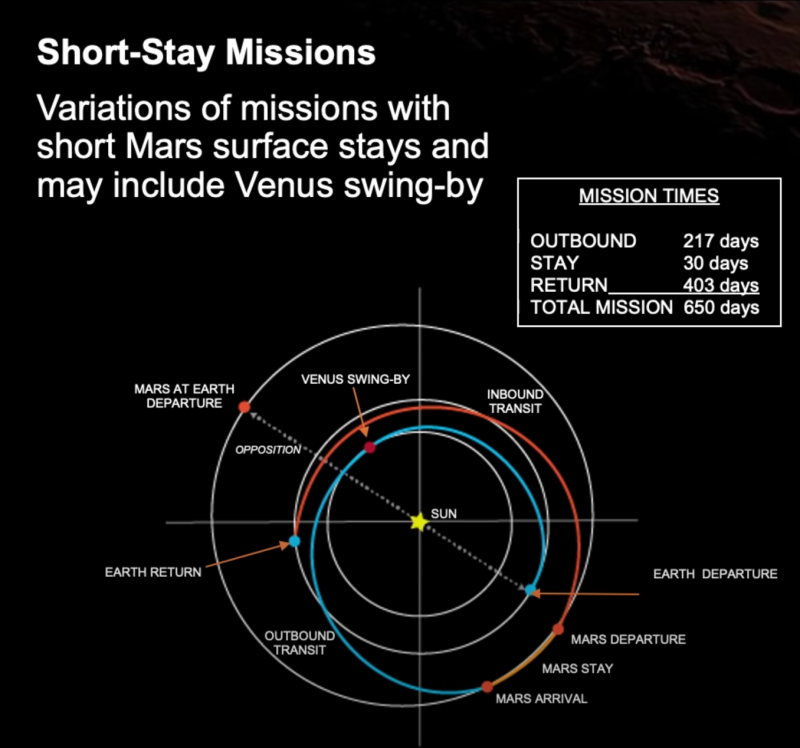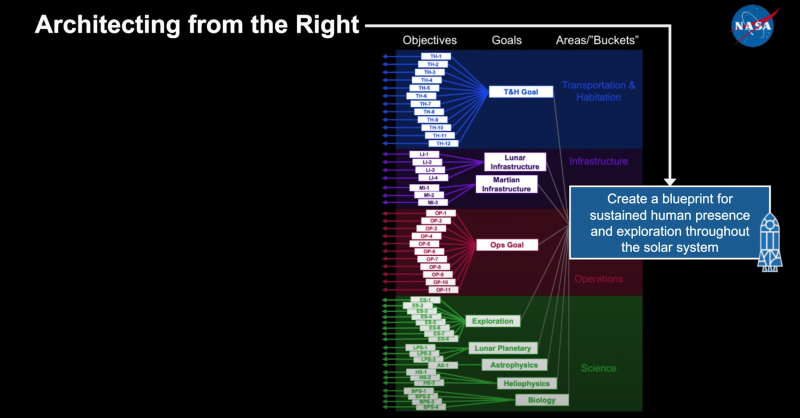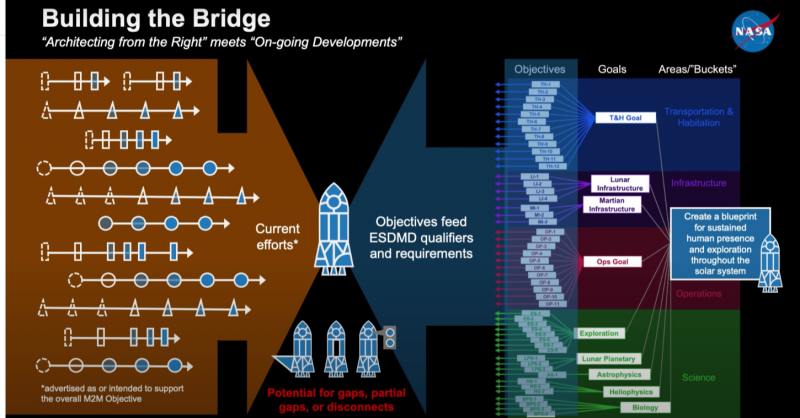
Look up!
What NASA’s strategy to reach Mars teaches us about leadership and navigating complexity
Do you also wonder sometimes how it feels to lead a massive organization, a country, or a space mission? We do. Very often.
How do they do it? By “they” we mean NASA’s leaders, when they tell us that the agency is planning to send humans on a 2-year mission to Mars by 2040. Last week, NASA held a public introduction to the ‘Moon to Mars Exploration Strategy (M2M)’, seeking input on its “deep space exploration objectives”. This plan entails annual lunar surface missions, pre-deploying infrastructure on Mars, and ultimately sending a crew on a long mission to reach Mars. As it stands, the mission involves a 217-day outbound trip and a 403-day return trip for a 30-day stay on the red planet. It’s as simple as that.

Start with WHY
Let us reiterate our question: how do they do it? How can NASA possibly coordinate the overwhelming amount of stakeholders involved in space exploration while securing the necessary budget and institutional support to finally set foot on Mars in two decades? Bill Hogan would say: “One bite a time”. But how do we get thousands of people, including engineers, consultants, policymakers, entrepreneurs, you and me, to eat their fair share of the elephant? NASA says: “start with why.”
Purpose-driven leadership is often invoked as an antidote to the relentless pursuit of growth that occurs at the expense of humans or the environment. Conceptually, purpose-driven leadership prioritizes purpose and values when making decisions on behalf of an organization. While evidence of success in large organizations is still scarce, this leadership style becomes particularly compelling when a strategy needs to engage a wide variety of stakeholders and, more importantly, build public support.
Putting this into practice starts with formulating a clear goal that is inspiring and corresponds to the plan’s genuine aspirations. NASA defined the goal of the Moon to Mars Strategy as follows: “Create a blueprint for sustained human presence and exploration throughout the solar system”. Consequently, the agency broke that goal down into 50 specific objectives that range from developing transportation capabilities to necessary scientific advancements in heliophysics. Here is where it gets interesting: to ensure that every single objective contributes directly to the strategy’s goal, NASA submitted a draft version of the 50 objectives for public feedback. Anyone can comment on the objectives via this form until June 3, 2022.

NASA’s tremendous didactic efforts explaining the M2M Strategy to the public suggest that this public inquiry is more than merely symbolic. First, with this endeavor, NASA tacitly acknowledges that the agency is ultimately accountable to the public. Second, it explains in a highly pedagogical manner how discoveries on Mars can directly improve life on Earth, conveying the message that “this is a mission with and for humanity”. In addition, NASA’s “architecting from the right” contributes to solving one of the biggest challenges when developing a strategy: connecting the WHY with the HOW. Every big organization has an inspiring mission statement. But more often than not, the actual objectives or KPIs do not match this mission, creating an embarrassing disconnect. If you want to be more like NASA, your objectives need to be closely aligned with your goal and make sure to check with the neighbor’s grand-daughter, who won’t accept any bogus mission statements.
Now WHAT?
Assume you came up with an inspiring (and genuine) goal and a set of clear objectives. What comes next? You finally move on to the execution. NASA will delegate the responsibility for accomplishing the various objectives of the M2M strategy across the agency, engaging thousands of stakeholders, including industry partners, scientists, policymakers and the public. Everyone eats a piece of the elephant.
But it doesn’t stop here. Large-scale strategies invariably result in inefficiencies, gaps, disconnects, and a mismatch between your objectives and what you are actually doing. According to NASA, this could translate into an objective not being addressed through any current effort, a current effort not being tied to any objective, or a lacking objective. Alternatively, several efforts could tackle the same objective, resulting in inefficiencies or redundancies. To respond to this inevitable challenge, NASA tasked the public and a Federated Board to conduct a so-called “gap analysis” aimed at building the bridge between objectives and on-going execution.

The way ahead
This may sound painfully anti-climactic, but the way ahead consists in sustaining current efforts while continuously conducting a gap analysis that keeps on-going execution in line with the objectives and the final goal … for 20 more years. But suddenly, we have a plan. Suddenly creating a blueprint for sustained human presence and exploration throughout the solar system no longer seems numbingly unachievable. A good plan won’t spare you the occasional headaches, but it will make it possible to navigate complexity and drastically increase the likelihood of inspiring everyone around you to accomplish your organization’s goal. Also, it’s kind of fun to save the world. Shall we?